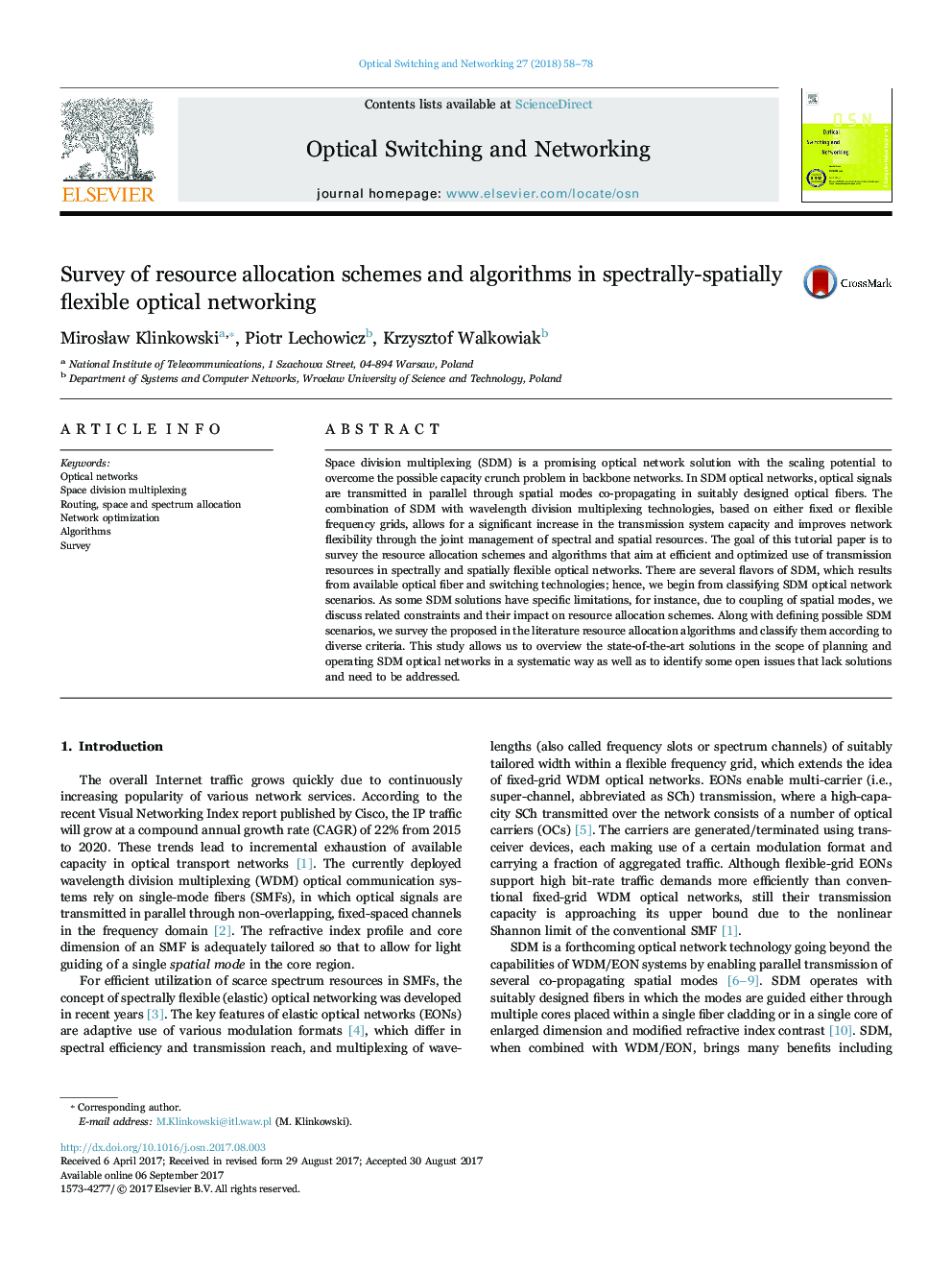| Article ID | Journal | Published Year | Pages | File Type |
|---|---|---|---|---|
| 4957168 | Optical Switching and Networking | 2018 | 21 Pages |
Space division multiplexing (SDM) is a promising optical network solution with the scaling potential to overcome the possible capacity crunch problem in backbone networks. In SDM optical networks, optical signals are transmitted in parallel through spatial modes co-propagating in suitably designed optical fibers. The combination of SDM with wavelength division multiplexing technologies, based on either fixed or flexible frequency grids, allows for a significant increase in the transmission system capacity and improves network flexibility through the joint management of spectral and spatial resources. The goal of this tutorial paper is to survey the resource allocation schemes and algorithms that aim at efficient and optimized use of transmission resources in spectrally and spatially flexible optical networks. There are several flavors of SDM, which results from available optical fiber and switching technologies; hence, we begin from classifying SDM optical network scenarios. As some SDM solutions have specific limitations, for instance, due to coupling of spatial modes, we discuss related constraints and their impact on resource allocation schemes. Along with defining possible SDM scenarios, we survey the proposed in the literature resource allocation algorithms and classify them according to diverse criteria. This study allows us to overview the state-of-the-art solutions in the scope of planning and operating SDM optical networks in a systematic way as well as to identify some open issues that lack solutions and need to be addressed.
